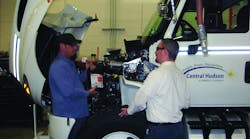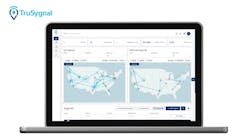Company: Central Hudson Gas & Electric, Poughkeepsie, NY
Operation: Utility provider offers electricity and gas in a 2,600-sq.-mi. area, stretching from the suburbs of New York City up to the Capital District in Albany, and operates about 1,000 pieces of equipment.
Problem:
Utility bills are among the most frequent targets of customer complaints, so utility providers must do everything they can to control costs and keep those bills from rising too quickly. Because they operate within a regulated industry that monitors rates, there is additional pressure on upper management of utilities to reduce expenses in areas of the operation where there is more control over expenses.
Using paper and pen, Central Hudson Gas & Electric, with about 1,000 pieces of equipment spread throughout the region, faced rising costs within its maintenance operations due to the manual operations of inputting and filling vehicle service issues.
In addition, there were concerns about potential maintenance issues with certain vehicle types, but without a more intuitive process, tracking those issues was time-consuming and problematic.
All this was leading to an inefficient maintenance operation.
Solution:
The solution turned out to be Chevin’s FleetWave enterprise fleet management software, which revamped an inefficient maintenance operation. The fleet says the software has directly led to an annualized saving of about $500,000 and boosted mechanic productivity 8% (measured in repair hours as a percentage of total hours worked).
“FleetWave is really a data repository, so all of our fleet information and driver information, accidents and shop orders—anything associated with the fleet—is in this system,” says Michael Dooley, operations supervisor-transportation department.
The software tracks vehicle maintenance history by creating a file for each piece of equipment.
“I don’t have to input shop orders, physically typing them up and then going back and filing them, which was a huge amount of time,” Andrina Rodriguez, transportation clerk, says. “Now, the mechanics can put all the information they need directly into the vehicle file.”
That has also led to more trend reporting, says Dooley, helping identify potential problems across vehicle makes or models.
“Mechanics can see what problem trucks we have,” he says. “Are there certain makes or models causing us to spend more hours repairing them?
“In the end, it allows us to make better decisions. What kind of trucks are we buying? What types of repairs are we making or should we be making? What should a vehicle lifecycle look like for different types of vehicles?” Dooley adds.
The software has also helped with utilization, he notes.
“We can analyze fleet utilization in order to deploy vehicles where they are needed most and redeploy underutilized equipment,” Dooley says. “Using FleetWave has helped us make better business decisions for all our stakeholders.”



